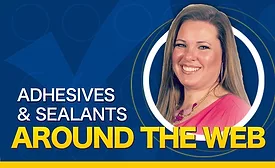Articles by Joan Mantini
Could the decontamination of landfills and open dumpsites really prove to be profitable?
Read More
Reversing for Recycling
A research team found that taking center stage in making this possible are ferromagnetic nanoparticles in thermoplastic adhesives, using electromagnetic energy.
February 28, 2018
Privacy, Please
New adhesive strips are functional for hiding personal and private information on prescription bottles.
February 21, 2018
Geckos Help Mankind Defy Gravity
Currently no materials exist that could allow people to scale walls or transverse ceiling as effortlessly as the gecko.
February 14, 2018
Hazardous Materials: Reduce, Reuse, Repurpose
To be considered for reusability hazardous materials must meet certain criteria.
February 7, 2018
Measuring Time in the Sun
A new wearable sensor contains photosensitive dyes that change colors when it has been exposed to UV rays.
January 31, 2018
De-Icing Aerospace
A third-year aerospace engineering major was nominated by his university for his research in aircraft icing with Rolls-Royce to prevent ice accretion in turbine engines.
January 24, 2018
Are Bio-Based Solutions Causing Problems?
In collaboration with MIT and the National Research Council of Canada, a team of researchers from the Composites Research Network and the Department of Biology have been studying the development and application of bio-sourced composites.
January 17, 2018
Ecolabeling in Turkey
The ecolabel system starts with reviewing the procurement of raw materials
January 10, 2018
Conflict-Free Cobalt
Back in the early 1900s, Cobalt Ontario had its heyday as a silver mining focal point.
January 3, 2018
Keep the info flowing with our newsletters!
Get the latest industry updates tailored your way.
JOIN TODAY!Copyright ©2025. All Rights Reserved BNP Media.
Design, CMS, Hosting & Web Development :: ePublishing


